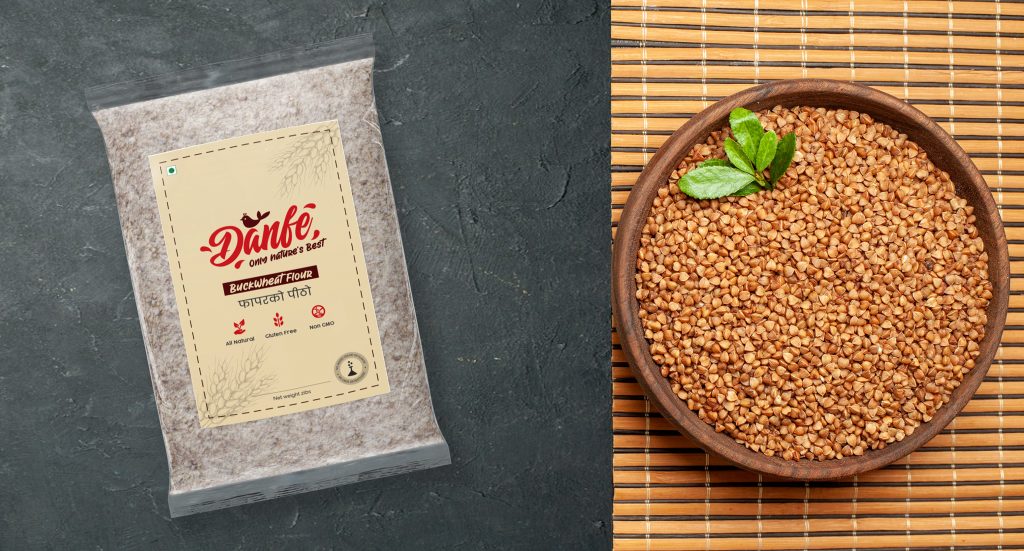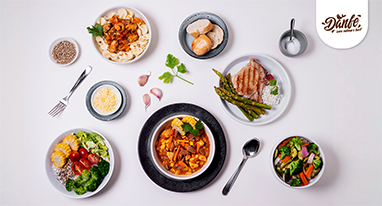The Shocking Truth About Whole Wheat Versus Gluten-Free Buckwheat
BY DANFE |

Looking for a healthy gluten-free solution for wheat flour? First let us understand about gluten. Gluten is a protein that can be found in many grains, including wheat, barley, and rye. It is what gives bread its chewy texture and helps it to rise. For people with celiac disease or non-celiac gluten sensitivity, ingesting gluten can cause serious gastrointestinal distress.
Whole wheat and gluten-free buckwheat may seem like they are interchangeable, but there are actually some key differences between the two. For one, whole wheat is made from wheat that has been ground into flour, while gluten-free buckwheat is made from the seeds of a plant in the buckwheat family. This means that whole wheat flour contains gluten, while buckwheat is gluten free.
Now that we’ve understood how gluten is a main distinguishing characteristic let us compare buckwheat flour vs wheat flour.
Calories
It’s no secret that calories are important when it comes to weight loss. But what may be surprising is that not all calories are created equal. In fact, some calories are actually better for you than others.
One type of calorie that is particularly good for weight loss is the calorie found in whole wheat. That’s because whole wheat is a complex carbohydrate, which means it takes the body longer to break down and absorb. This means that you’ll feel fuller for longer after eating whole wheat, and won’t be as likely to overeat.
Another type of calorie that can be helpful for weight loss is the calorie found in gluten-free buckwheat. It is a high-fiber food, which also makes it slower to digest. This means that you’ll feel full after eating buckwheat and won’t be as likely to overeat.
So, if you’re looking to lose weight, make sure to include whole wheat and gluten-free buckwheat in your diet. These healthy foods will help you feel full and satisfied, so you won’t be tempted to overeat.
Dietary Fiber
There’s no denying that whole wheat bread is healthier than white bread. It contains more fiber, which helps regulate digestion and can even lower cholesterol levels. But what about gluten-free bread? Can they offer the same health benefits as whole wheat bread?
It turns out that gluten-free bread made with buckwheat may actually be even healthier than whole wheat bread. Buckwheat is a nutrient-rich grain that is high in fiber and antioxidants. It also has a low glycemic index, which means it won’t cause spikes in blood sugar levels.
Whole wheat offers 23 grams of dietary fiber per cup, while buckwheat has 17 grams. Because dietary fiber lowers the levels of harmful LDL cholesterol, it may reduce your chance of developing heart diseases. Vegetables, fruits, legumes, nuts, and whole grains are good sources of dietary fiber. So, if you’re looking for a healthy alternative to whole wheat bread, look for gluten-free bread made with buckwheat. It just might be the shockingly healthy choice you’ve been looking for!
Nutrition
There’s a lot of debate in the nutrition world about whether whole wheat or gluten-free buckwheat is better for you. Both are packed with vitamins and minerals. Whole wheat is a good source of vitamins E, and K, as well as fiber. However gluten-free buckwheat is a good source of vitamins A, C, and E, as well as potassium, magnesium, iron, and fiber. So it seems like gluten-free buckwheat would give you more nutrients required by your body. Wheat and buckwheat both have 697 and 782 mg of potassium per cup, respectively, and both grains are naturally practically sodium-free.
If you’re skeptical of buckwheat flour, here’s a simple recipe you can try out at home and decide if you enjoy eating buckwheat or not.
Banana Pancakes!
Who doesn’t like the aroma of yummy pancakes in the morning?
Here’s an awesome way you can get your banana pancakes to be healthy and gluten-free!
Ingredients:
1 cup Buckwheat flour
1 overripe banana
¾ cup oat milk
½ tsp vanilla or vanilla essence
1 tsp apple cider vinegar
2 tbsp coconut sugar
1 tsp baking Powder
½ tsp baking soda
Instructions:
- Blend the banana with any plant-based milk, apple cider vinegar, vanilla, or vanilla essence until the banana is completely incorporated into the other liquids (about a minute). The top ought to be nice and fluffy.
- If your blender contains whisk attachments, swap them out right away. If not, combine the moist ingredients in a bowl and whisk with a hand or electric mixer.
- The dry components should be combined.
- Whisking along the way, gradually combine the dry ingredients with the wet ones.
- Little bubbles should begin to appear in the mixture.
- Take a nonstick pan and spray it with a little oil and on low heat.
- Once it is heated, add a few spoonfuls of the pancake mix, leaving some space. between each one because they will expand as they cook.
- Cook the pancake mix until all of it is cooked, about two and a half minutes on each side.
- It’s better to leave the cooked pancakes on a wire rack rather than stacking them when cooking in batches to prevent sogginess.
These extremely healthy pancakes are healthy and would serve all your nutritional needs. The nutritional break up for these pancakes are as follows:
- SATURATED FAT: 0g
- TRANS FAT: 0g
- UNSATURATED FAT: 0g
- CHOLESTEROL: 1mg
- SODIUM: 102mg
- CARBOHYDRATES: 12g
- FIBER: 1g
- SUGAR: 4g
Also read: Is buckwheat flour better than white flour?
Conclusion
If you’re like most people, you probably thought that whole wheat bread is healthier than gluten-free buckwheat bread. As discussed above, they both have a similar nutritional profile. In fact, buckwheat is higher in fiber, Vitamin B and Vitamin E. It is also lower on the glycemic index than whole wheat, meaning it won’t cause sudden spikes in blood sugar levels. Now that we’ve given you a clearer picture of buckwheat vs whole wheat, you can decide which one suits your lifestyle better.
Do check out our tasty solution to a run-down battery on our Instagram page!




